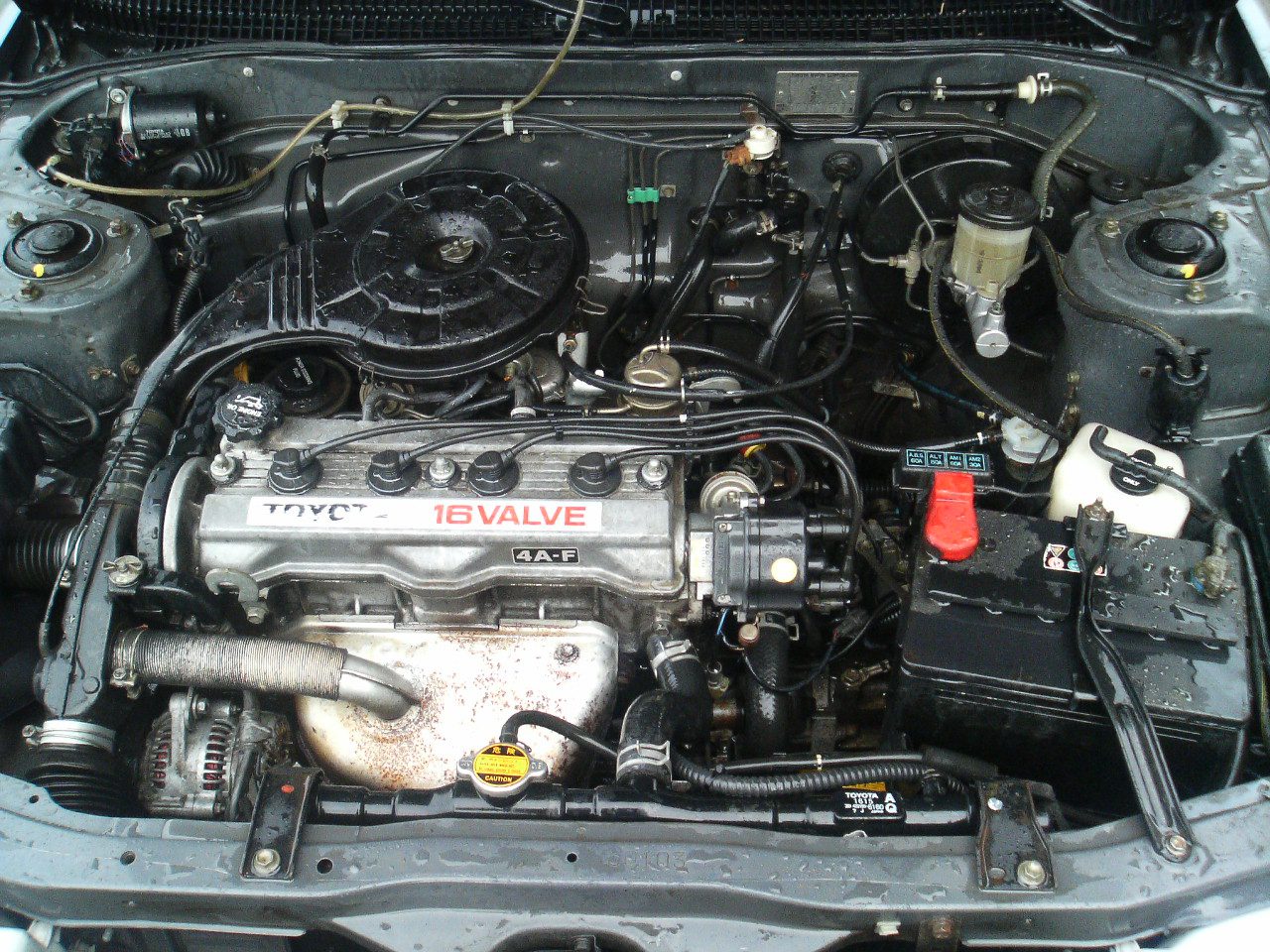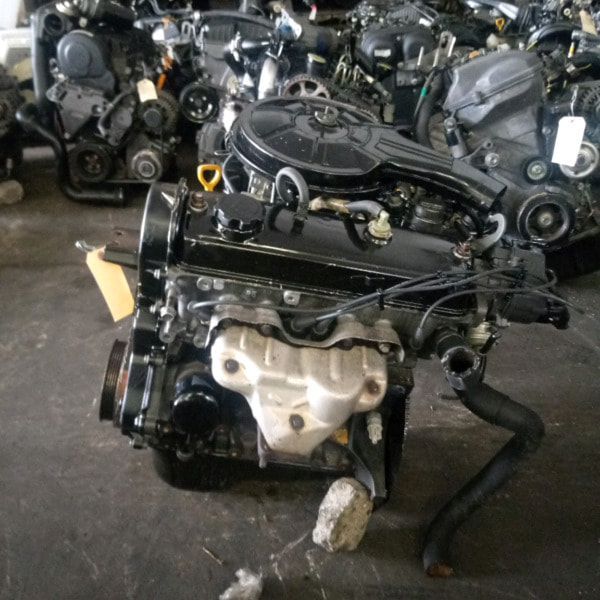Why the Toyota Tazz Remains a Popular Choice for Budget-Conscious Drivers
Why the Toyota Tazz Remains a Popular Choice for Budget-Conscious Drivers
Blog Article
Discover the most up to date Fads in Engine Technology Through Tazz
In the rapidly progressing landscape of automotive modern technology, Tazz stands at the forefront, highlighting substantial developments in engine systems that prioritize both development and sustainability. From crossbreed engines that maximize gas efficiency to the appearance of hydrogen fuel cells, the patterns shaping modern-day powertrains are not just improving efficiency but additionally addressing important environmental obstacles.
Crossbreed Engine Innovations
Crossbreed engine technologies represent a crucial change in auto modern technology, integrating the benefits of internal combustion engines with electric propulsion systems. This combination not only enhances fuel effectiveness yet additionally minimizes exhausts, conference significantly stringent ecological guidelines. By utilizing both energy sources, hybrid engines can enhance efficiency, delivering power when needed while preserving gas throughout less demanding driving problems.
Recent developments in crossbreed modern technology include renovations in battery performance and regenerative braking systems. These innovations allow for higher power recuperation throughout deceleration, which can be rerouted to aid in acceleration or power auxiliary systems. Furthermore, producers are focusing on portable designs and light-weight materials to optimize the performance of crossbreed powertrains.
The growth of plug-in hybrids has actually also expanded the marketplace, making it possible for motorists to charge their automobiles using typical electric outlets. This attribute usually enables significant all-electric array, more lowering dependence on traditional gas. tazz. As the auto sector continues to evolve, hybrid engine innovations are expected to play a crucial function in bridging the gap between traditional cars and fully electrical designs, offering a transitional option that satisfies varied customer requirements and choices
Advances in Electric Powertrains
The auto landscape is rapidly progressing, with electric powertrains arising as a leading pressure in lasting transport. Developments in electrical vehicle (EV) modern technology are substantially boosting customer, efficiency, and effectiveness experience. Secret advancements consist of renovations in battery chemistry, which have enhanced power thickness, reduced billing times, and prolonged overall battery life.
Solid-state batteries, for example, assure to reinvent the marketplace by supplying better security and performance compared to typical lithium-ion cells. In addition, developments in regenerative braking systems are allowing lorries to recuperate power during deceleration, adding to total efficiency.
In enhancement to battery modern technology, electric motor designs are coming to be more advanced. Advancements such as integrated electric motors and advanced thermal administration systems are helping to enhance power distribution and reduce weight, inevitably improving car characteristics.

Jointly, these developments underscore the dedication to change towards cleaner, a lot more effective transport solutions, placing electric powertrains at the forefront of automotive advancement.
The Increase of Hydrogen Fuel Cells
Increasingly, hydrogen fuel cells are getting traction as a viable option to standard interior combustion engines and battery electrical cars. This innovation takes advantage of the chemical energy kept in hydrogen, converting it into electricity through an electrochemical response with oxygen. The main byproduct of this procedure is water, making hydrogen fuel cells an eco-friendly choice with absolutely no discharges at the tailpipe.

Automakers are increasingly spending in hydrogen gas cell modern technology, recognizing its possibility for long-range applications and rapid refueling capacities that measure up to conventional gas. Furthermore, fields such as durable transport and public transportation are especially fit for hydrogen fuel cells, where battery electric options might fail due to weight and array constraints.
As research and financial investment remain to expand, hydrogen gas cells are poised to play a considerable duty in the future landscape of clean transport and energy options.
Enhancements in Internal Combustion Engines
Innovations in internal combustion engine (ICE) innovation are changing conventional automobiles to satisfy modern-day ecological requirements and efficiency expectations. One of one of the most significant enhancements involves the combination of innovative fuel shot systems. These systems enhance the air-fuel mix, improving burning performance and resulting in minimized emissions. Straight gas injection, as an example, enables for much better atomization of gas, resulting in more total burning and enhanced power output.
Furthermore, turbocharging has acquired prominence, enabling smaller engines to supply greater performance without the weight of larger engines - tazz. This technology not only boosts efficiency however also adds to reduce fuel usage. Variable shutoff timing systems are additionally being improved, enabling engines to adjust to different driving problems for boosted torque and responsiveness
Furthermore, the use of light-weight materials in engine building and construction is ending up being common, additional boosting fuel performance by reducing general car weight. Engine control systems (ECUs) are significantly sophisticated, enabling real-time modifications that optimize performance and exhausts.
These improvements collectively symbolize a crucial shift in ICE technology, straightening with international sustainability goals while still providing the efficiency drivers expect from their automobiles. As the industry progresses, these enhancements continue to shape the explanation future of typical vehicle engineering.
Future Patterns in Engine Efficiency
Substantial advancements in engine efficiency are prepared for as suppliers concentrate on incorporating innovative modern technologies to meet strict environmental guidelines and customer needs. The change towards electrification, crossbreed systems, and alternate fuels is reshaping the automobile landscape, driving innovations that boost gas economy and lower emissions.
One of the essential trends is the implementation of advanced you could check here products and manufacturing techniques. Lightweight composites and high-strength alloys add to decreased automobile weight, thus boosting general efficiency. In addition, the adoption of turbocharging and variable valve timing modern technologies enables for improved power output from smaller engines, further boosting gas economic situation.

Final Thought
In verdict, the expedition of engine technology exposes substantial advancements that prioritize sustainability and effectiveness. Technologies in crossbreed engine systems, electric powertrains, and hydrogen fuel cells demonstrate a dedication to lowering discharges while boosting efficiency. Additionally, renovations in inner combustion engines and a concentrate on light-weight materials add to general engine effectiveness. As the automotive sector proceeds to evolve, these patterns will play a critical function fit a cleaner and even more lasting future Bonuses for transport.
From hybrid engines that maximize fuel efficiency to the development of hydrogen fuel cells, the fads shaping contemporary powertrains are not only improving efficiency however also resolving important ecological challenges.Crossbreed engine technologies stand for an essential change in automotive technology, incorporating the benefits of interior burning engines with electrical propulsion systems.Additionally, turbocharging has gained prestige, permitting smaller sized engines to supply higher efficiency without the weight of larger engines. In addition, the fostering of turbocharging and variable valve timing innovations permits for enhanced power output from smaller sized engines, even more improving fuel economic situation.
Enhancements in inner combustion engines and an emphasis on light-weight products contribute to general engine performance.
Report this page